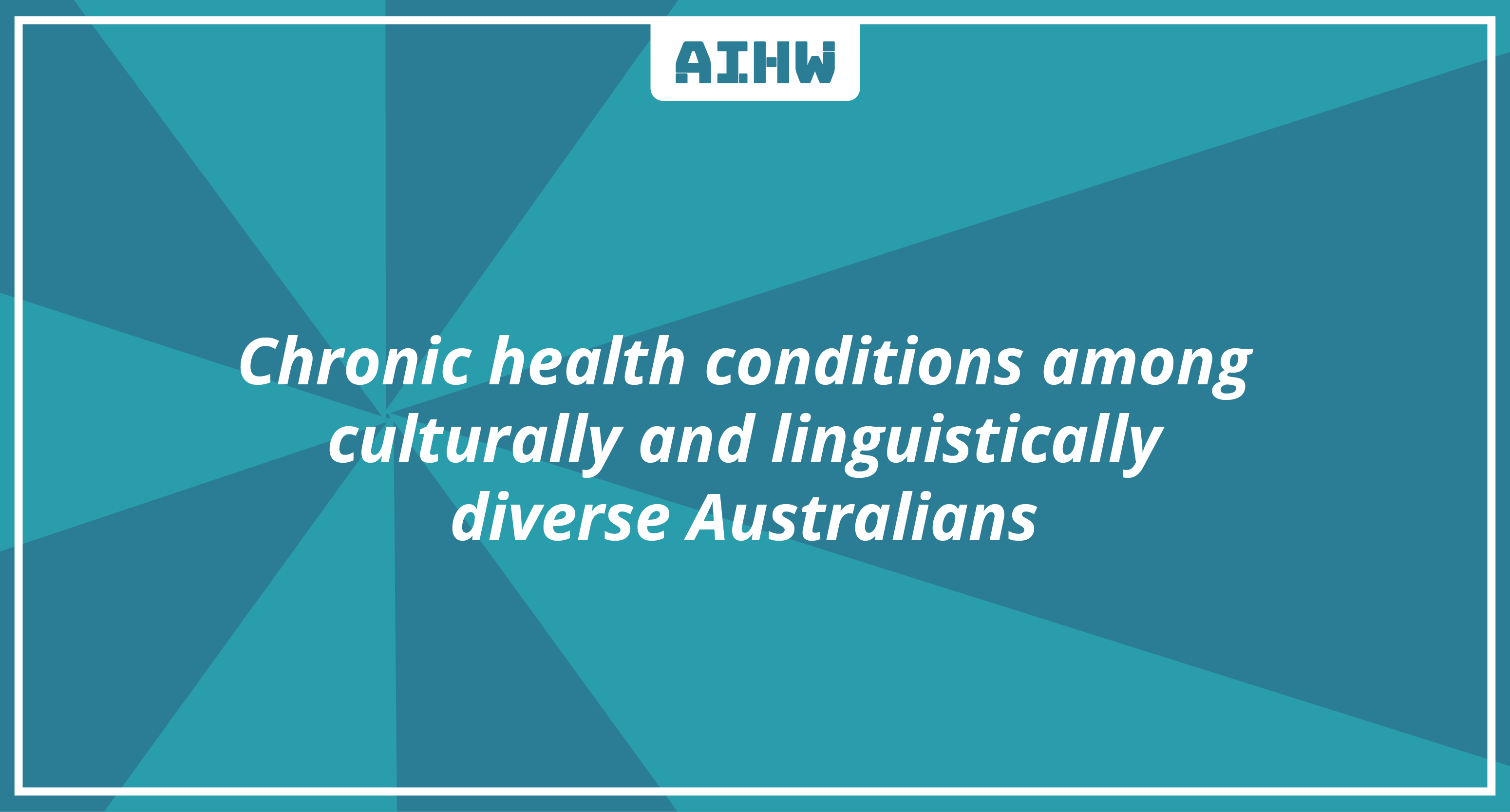Chronic health conditions among culturally and linguistically diverse Australians, 2021

With such diversity, today’s report is fundamental to building a more complete picture of the health status of more than 7 million CALD people living in Australia. It will help us build a better understanding of health differences between CALD populations, enabling governments to design and deliver improved services to ensure they can access the health and community services they require.
Chronic health conditions among culturally and linguistically diverse Australians, 2021 uses data collected by the Australia Bureau of Statistics in the 2021 Census, for the first time, on selected long-term health conditions experienced by the Australian population.
This inclusion allows for the analysis of chronic health conditions reported by CALD population at more detailed levels than is currently possible from existing health surveys, across a wide range of CALD indicators used individually and together as follows:
- country of birth of person
- year of arrival in Australia
- language used at home
- proficiency in spoken English (if report a language used other than English)
- country of birth of person and year of Arrival in Australia
- year of arrival in Australia and proficiency in spoken English
- language used at home and proficiency in spoken English.
The patterns observed in this report are likely to reflect the diverse cultures, languages, migration trajectories, social and economic circumstances among culturally and linguistically diverse people in Australia. Controlling for the effect of age, some of the main findings include:
- People born in Australia, English-speaking and European countries generally had the highest prevalence of chronic conditions such as arthritis, asthma, cancer, lung conditions and mental health conditions
- Bangladesh-born Australians had the highest prevalence of both diabetes and heart disease – 12% and 4.6% respectively, while kidney disease was highest in people born in Polynesian countries such as Tonga (1.9%) and Samoa (1.5%)
- The prevalence of long-term conditions generally increased as the number of years since arriving in Australia increased
- The prevalence of most conditions was higher for those with low compared to high English proficiency for most languages
- Low English proficiency and more than 10 years in Australia was associated with a higher prevalence of chronic conditions
- For people who arrived within 10 years before the 2021 Census, there was little difference in the prevalence of many long-term health conditions for people with low or high English proficiency, except for asthma which was more common among people with high English proficiency
- Earlier migrants from Iraq had a lower prevalence of dementia, stroke, heart and kidney disease than recent arrivals.
Indicators like the length of time migrants have been in Australia can give a picture of how familiar they are with Australian society and health practices. It is also useful to explore how the social characteristics of migrants change with length of time spent in Australia. However, it is important these indicators are used in combination with others to better inform on socio-cultural differences between the CALD populations.
This study forms part of a work program on the health status of CALD people in Australia. Further work is planned to help fill knowledge gaps that can be used to target barriers faced by CALD populations in accessing health care.
Users can explore more detailed data in an interactive data visualisation tool: Chronic health conditions among culturally and linguistically diverse Australians, 2021, Country of birth - Australian Institute of Health and Welfare (aihw.gov.au)
The study builds on a previous scoping paper, Reporting on the health of culturally and linguistically diverse populations in Australia, which explores the benefits of linked data to better identify and report on health outcomes for CALD Australians.


